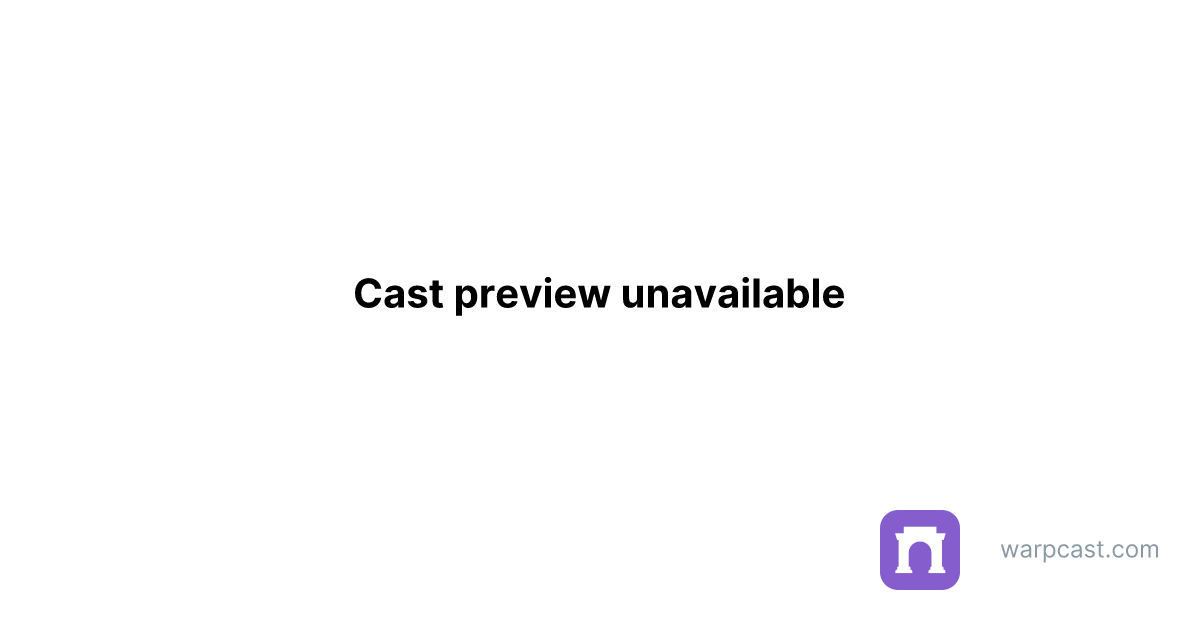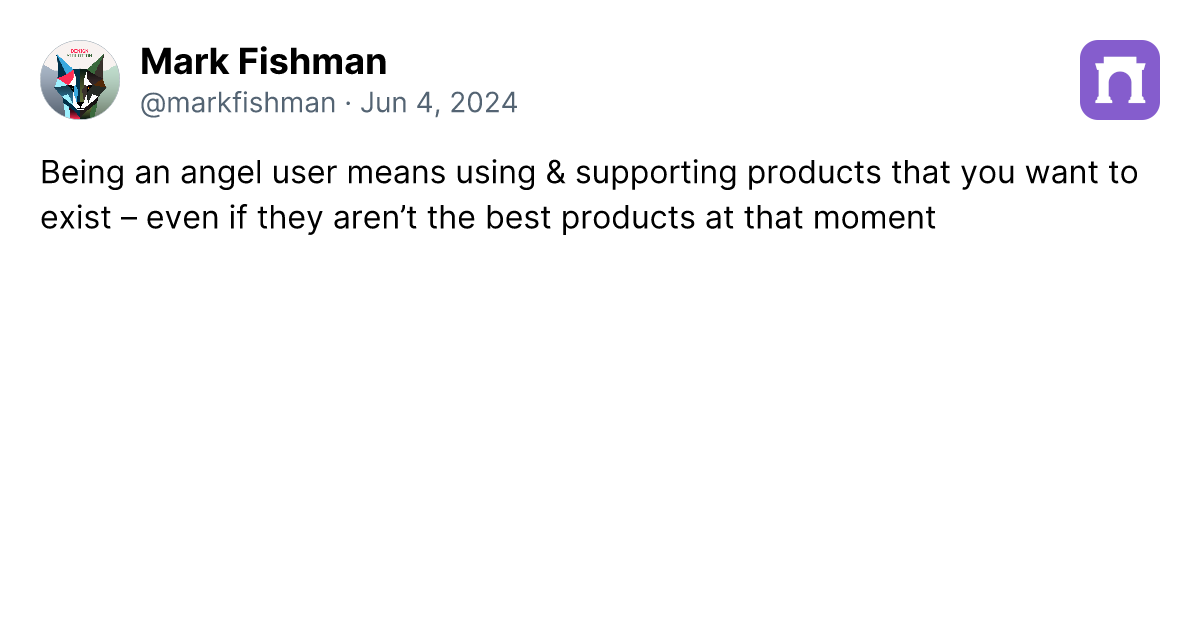A Spotlight on Spotlight: How to Boost Demand
Improving UX for the "Farcaster Attention Network"
If you’d like to get feedback on your product, book some time on my Spotlight!
This post wasn’t sponsored by Spotlight, but I do like to write about products I'm enjoying – so it's possible your project could be featured in the future 🙂
Spotlight is a new product that serves as a “Farcaster Attention Network”. Each person on Farcaster is given one spotlight per day that can be purchased at a price that is programmatically determined by the historical demand for that spotlight.
When I first heard of Spotlight and got a demo from Michael, I was immediately intrigued. I really like the idea of using constraints for attention and monetization.
To illustrate with an example: I have considered starting a Hypersub for freelance services, but that creates an equation with multiple variables to solve for: the price, the number of people I could serve, the length of time I’d serve them for…
The genius of Spotlight is its simplicity. There’s one unit per day, and the price is determined by the demand. The business model is fixed; now you just figure out what to sell. Because Spotlight is set up as a daily offering, it constrains what you can offer. The challenge –and opportunity– is to figure out what your atomic unit of value is. (I'm trying 30-minute product feedback calls.)
The current priority for Spotlight is bootstrapping activity on the network.
The product already has important building blocks in place; everyone on Farcaster already has a profile and a wallet built in. This makes Spotlight “permissionless” – someone can book another person’s spotlight without them even knowing Spotlight exists.
However, I think this streamlined onboarding that actually presents an issue for Spotlight. For people to feel confident booking spotlights, they will want to know that someone is actually active on the platform. I don’t want to just send someone money without knowing if I’ll actually get what I bought.
While it is nice that someone’s profile already exists, it should be clear whether that person is active on Spotlight. One simple way to do this would be to show an icon that indicates that a person has “set up” their profile.
Does the user have a description of their spotlight use case and booking policy?
Have they opted into DCs for booking notifications (not currently a feature, but something I expect to be built)?

In the future, I could see something like reviews being part of Spotlight – but that’s a longer play. There are some small tweaks here that I think would increase consumer confidence and boost conversion.
Conversion is just one factor for demand; the other is discovery. Assuming Spotlight can onboard enough active “supply”, they will need to help users find the right spotlights to book.
One way to do this is with categories. There are some initial use cases that the team has identified, and I think there are ways to lean into these in a lightweight way without overly committing to building out specific workflows.
For example, allowing users to append a single tag to their profiles (ie. “Advertisement” or “Consulting”) would give Spotlight an opportunity to curate different spotlights across the app. This is similar to how Bountycaster scaled their discovery on their marketplace. Right now, the search/discover page on the Spotlight app has a list of “trending” users – bringing categories here would help with discovery.

Finally – and I know the team is already working on this – the booking flow should be simplified.
Right now, booking a spotlight requires publicly sharing an image, message and a link. This is used to generate content for the feed, in addition to serving as a communication channel for the booker to send information to the receiver. However, reducing friction for consumers is key; only the information necessary for booking should be required.
A @spotlightbot can certainly exist as a way to drum up attention on Farcaster feeds, but this shouldn’t be the responsibility of a booker. (I have had people tell me they didn’t want to book my spotlight because they didn’t want to publicly share what they were working on. Of course, they didn’t need to share that specific information on the public booking flow – but I understood why asking for a message & image during the booking process would be confusing.)
My recommendation is the booking flow should be treated as a transaction split into a few simple steps:
Confirm spotlight information (category & service offered, booking policy)
Choose a date and confirm transaction
Send requested information to spotlight owner
I have shared some of this information with Michael already, but I wanted to do a writeup partially to share my excitement about Spotlight. As an angel user, I want to support products I want to see in the world.
But also, I'm trying to scale up my Angel User practice, and I want to demonstrate the type of feedback I like giving to builders.
If you'd like to get your product on my radar, you know how to reach me 🙂





giving time.fun a shot -- you pay for attention using a token. has me thinking about ways you could improve user research recruiting: - onchain metrics (token holdings) define segments - specific wallets set a rate at which they would commit to meeting - people pay for time and are refunded if the wallet doesn't show up
Seems like many people are "underpriced" given what they could command on other platforms. What do you think the reason is? Some thoughts: - easy to just DM them and ask for a call - "reliability" of the platform (will this person actually respond?)
Very underpriced! I have sent a few DMs out. Already received 1 reply. I think people on here are very active and want to support the guy building this product. Feels like an efficient way to ask a question to people who are very very busy. Will keep you updated
Please do! I like the idea of explicitly monetized attention, was excited about what @mjc716 was building earlier https://paragraph.xyz/@markfishman/a-spotlight-on-spotlight-how-to-boost-demand